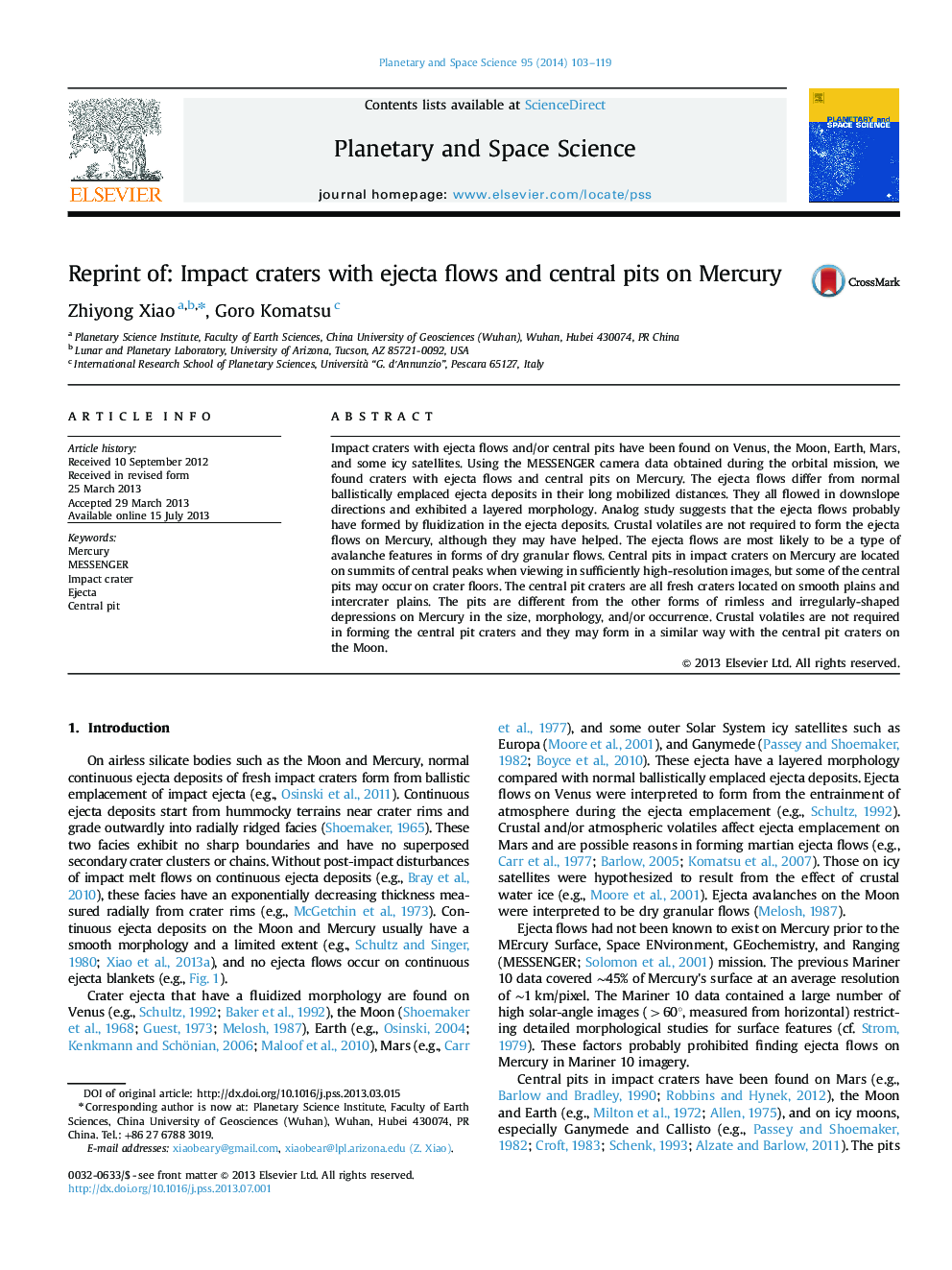| کد مقاله | کد نشریه | سال انتشار | مقاله انگلیسی | نسخه تمام متن |
|---|---|---|---|---|
| 1781140 | 1523942 | 2014 | 17 صفحه PDF | دانلود رایگان |
• Craters with ejecta flows and central pits are found for the first time on Mercury.
• Their morphological and geometrical parameters are measured and listed.
• Comparisons were made with similar features on other planetary bodies.
• The ejecta flows on Mercury are most likely to be dry granular flows.
• The central-pit craters on Mercury do not require crustal volatiles to form.
Impact craters with ejecta flows and/or central pits have been found on Venus, the Moon, Earth, Mars, and some icy satellites. Using the MESSENGER camera data obtained during the orbital mission, we found craters with ejecta flows and central pits on Mercury. The ejecta flows differ from normal ballistically emplaced ejecta deposits in their long mobilized distances. They all flowed in downslope directions and exhibited a layered morphology. Analog study suggests that the ejecta flows probably have formed by fluidization in the ejecta deposits. Crustal volatiles are not required to form the ejecta flows on Mercury, although they may have helped. The ejecta flows are most likely to be a type of avalanche features in forms of dry granular flows. Central pits in impact craters on Mercury are located on summits of central peaks when viewing in sufficiently high-resolution images, but some of the central pits may occur on crater floors. The central pit craters are all fresh craters located on smooth plains and intercrater plains. The pits are different from the other forms of rimless and irregularly-shaped depressions on Mercury in the size, morphology, and/or occurrence. Crustal volatiles are not required in forming the central pit craters and they may form in a similar way with the central pit craters on the Moon.
Journal: Planetary and Space Science - Volume 95, May 2014, Pages 103–119
